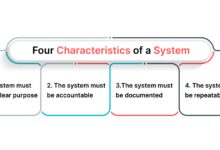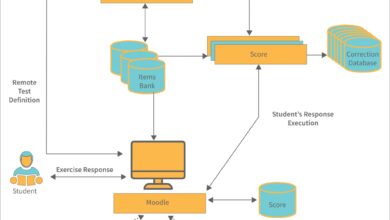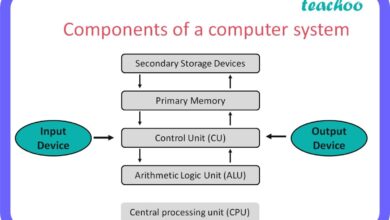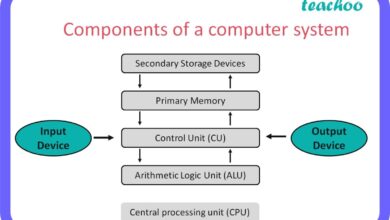System Development Life Cycle: 7 Powerful Stages Revealed
Ever wondered how complex software systems come to life? It all starts with a powerful framework known as the system development life cycle. This structured approach guides teams from concept to deployment—and beyond.
What Is the System Development Life Cycle?

The system development life cycle (SDLC) is a comprehensive framework used to design, develop, test, and deploy information systems efficiently. It’s the backbone of successful software and IT projects, ensuring that every phase is methodically planned and executed. Whether you’re building a mobile app or an enterprise resource planning (ERP) system, SDLC provides the roadmap.
Definition and Core Purpose
At its core, the system development life cycle is a step-by-step process that manages the creation and maintenance of software systems. Its primary goal is to produce high-quality systems that meet or exceed user expectations, delivered on time and within budget.
According to the ScienceDirect, SDLC is not just about coding—it’s about understanding user needs, defining requirements, and ensuring long-term system sustainability.
- Ensures structured project management
- Reduces risks of project failure
- Improves communication between stakeholders
Historical Evolution of SDLC
The concept of the system development life cycle dates back to the 1960s, when large-scale business systems and databases began to emerge. Initially, it was used in mainframe computing environments where errors were costly and difficult to fix.
Over time, SDLC evolved from rigid, linear models to more flexible, iterative approaches. The introduction of agile methodologies in the early 2000s marked a significant shift, emphasizing collaboration, customer feedback, and adaptability.
“SDLC was born out of necessity—when software became too complex to manage without a structured approach.” — TechTarget
The 7 Key Stages of the System Development Life Cycle
Understanding the system development life cycle means diving into its seven fundamental stages. Each phase plays a critical role in transforming an idea into a fully functional system. Skipping or rushing any of these steps can lead to costly errors, security vulnerabilities, or user dissatisfaction.
1. Planning and Requirement Analysis
This is the foundation of the entire system development life cycle. During this stage, project managers and analysts gather input from stakeholders to define the scope, objectives, and feasibility of the project.
Key activities include:
- Identifying user needs and business goals
- Conducting feasibility studies (technical, economic, legal)
- Defining project timelines and resource allocation
A well-documented requirement specification becomes the blueprint for all future development work. Tools like SWOT analysis and PESTLE frameworks are often used to assess external and internal factors affecting the project.
2. System Design
Once requirements are clear, the next step in the system development life cycle is designing the system architecture. This phase translates user needs into technical specifications.
Designers create models that outline:
- Data flow diagrams (DFDs)
- Entity-relationship diagrams (ERDs)
- System interfaces and user experience (UX) layouts
The output is a detailed design document that developers will follow. This stage also involves choosing appropriate technologies, databases, and frameworks. For example, a web-based application might use React for the frontend and Node.js for the backend.
According to IBM, a solid design phase can reduce development costs by up to 40% by catching flaws early. Learn more at IBM Software Design.
3. Implementation (Development)
This is where the actual coding begins. Developers write programs based on the design specifications. The system development life cycle now moves from theory to practice.
Depending on the methodology used (Waterfall, Agile, DevOps), implementation can be done in phases or as a single release. Modern teams often use integrated development environments (IDEs) like Visual Studio Code or JetBrains IDEs to streamline coding.
- Code is written in languages such as Java, Python, or C#
- Version control systems like Git are used for collaboration
- Automated testing tools are integrated early
Continuous integration (CI) pipelines ensure that new code doesn’t break existing functionality. This stage may take weeks or months, depending on project complexity.
4. Testing
No system is ready for deployment without rigorous testing. This phase ensures that the software meets all specified requirements and is free of critical bugs.
Testing types include:
- Unit testing – checking individual components
- Integration testing – verifying how modules work together
- System testing – evaluating the complete system
- User acceptance testing (UAT) – final validation by end-users
Tools like Selenium, JUnit, and Postman are widely used. Any issues found are logged and sent back to developers for correction. This iterative process continues until the system passes all test cases.
“Testing is not a phase—it’s a continuous discipline embedded throughout the system development life cycle.” — IEEE Software
5. Deployment
After successful testing, the system is ready for deployment. This stage involves installing the software in the production environment where users can access it.
Deployment strategies vary:
- Big Bang: Full rollout at once
- Phased: Gradual release in stages
- Parallel: Old and new systems run together temporarily
DevOps practices have revolutionized deployment with automation tools like Jenkins, Docker, and Kubernetes. These allow for faster, more reliable releases with minimal downtime.
For more on deployment best practices, visit Atlassian’s Guide to Continuous Delivery.
6. Operation and Maintenance
Once live, the system enters the operation phase. This is often the longest stage in the system development life cycle. The focus shifts to performance monitoring, user support, and routine updates.
Maintenance types include:
- Corrective: Fixing bugs discovered post-deployment
- Adaptive: Modifying the system for new environments (e.g., new OS)
- Perfective: Enhancing features based on user feedback
- Preventive: Improving system reliability and efficiency
Regular audits and performance reviews help ensure the system remains secure and efficient over time.
7. Evaluation and Feedback Loop
The final stage of the system development life cycle is often overlooked but crucial. Evaluation involves assessing whether the system met its original goals and identifying areas for improvement.
Stakeholders review key performance indicators (KPIs) such as:
- User satisfaction rates
- System uptime and reliability
- Return on investment (ROI)
Feedback is collected through surveys, logs, and analytics tools. This data informs future iterations or entirely new projects, creating a continuous improvement cycle.
Popular SDLC Models and Methodologies
The system development life cycle isn’t a one-size-fits-all process. Different projects require different approaches. Over the years, several SDLC models have emerged, each with unique strengths and ideal use cases.
Waterfall Model
One of the earliest and most traditional models, the Waterfall approach follows a linear sequence. Each phase must be completed before the next begins—like water flowing down a cascade.
Advantages:
- Simple and easy to understand
- Clear milestones and deliverables
- Suitable for projects with stable requirements
Disadvantages:
- Limited flexibility for changes
- Testing occurs late in the cycle
- High risk if requirements are misunderstood
Best for: Government projects, manufacturing systems, or any environment where requirements are fixed and well-documented.
Agile Model
The Agile methodology revolutionized the system development life cycle by introducing iterative and incremental development. Instead of delivering one final product, Agile delivers working software in small, frequent releases called sprints.
Key principles from the Agile Manifesto include:
- Individuals and interactions over processes and tools
- Working software over comprehensive documentation
- Customer collaboration over contract negotiation
- Responding to change over following a plan
Agile teams use frameworks like Scrum and Kanban to manage workflows. Daily stand-ups, sprint planning, and retrospectives keep the team aligned and adaptive.
“Agile doesn’t eliminate chaos—it harnesses it for innovation.” — Mary Poppendieck
Iterative and Spiral Models
The Iterative model builds the system in cycles. Each iteration goes through planning, design, implementation, and testing. The product evolves with each cycle, incorporating feedback and enhancements.
The Spiral model combines iterative development with risk analysis. It’s especially useful for large, high-risk projects.
- Each loop represents a phase of development
- Risk assessment is conducted before advancing
- Allows for prototyping and early user feedback
These models are ideal for complex systems where requirements are expected to evolve, such as defense or aerospace software.
Role of Project Management in the System Development Life Cycle
Effective project management is the glue that holds the system development life cycle together. Without strong leadership, even the best technical teams can fail to deliver.
Project Planning and Scope Definition
A project manager begins by defining the scope, objectives, deliverables, and constraints. This includes setting SMART goals (Specific, Measurable, Achievable, Relevant, Time-bound).
Tools like Gantt charts, Work Breakdown Structures (WBS), and risk registers help organize tasks and anticipate challenges.
- Scope creep is a major risk—adding features without adjusting time or budget
- Clear communication with stakeholders prevents misunderstandings
- Resource allocation must be realistic and flexible
For best practices in project planning, check out Project Management Institute (PMI).
Team Coordination and Communication
The system development life cycle involves diverse roles: business analysts, developers, testers, UX designers, and clients. The project manager ensures everyone is on the same page.
Effective communication strategies include:
- Regular status meetings
- Using collaboration tools (e.g., Slack, Microsoft Teams, Jira)
- Documenting decisions and changes
In Agile environments, the Scrum Master plays a similar role, facilitating sprints and removing blockers.
Risk Management and Mitigation
Every phase of the system development life cycle carries risks—technical failures, budget overruns, security breaches, or user rejection.
A proactive risk management strategy includes:
- Identifying potential risks early
- Assessing their impact and likelihood
- Developing contingency plans
For example, if a key developer leaves mid-project, having documented code and cross-trained team members can prevent delays.
“The best project managers don’t avoid risks—they anticipate and manage them.” — Harvard Business Review
Tools and Technologies Supporting the System Development Life Cycle
Modern software development relies heavily on tools that automate, streamline, and enhance each phase of the system development life cycle.
Requirements Management Tools
Tools like Jira, Trello, and Azure DevOps help teams capture, organize, and track requirements throughout the project lifecycle.
- Enable real-time collaboration
- Support traceability from requirement to deployment
- Integrate with development and testing tools
These platforms allow teams to prioritize features, assign tasks, and monitor progress visually.
Development and Version Control Systems
Version control is essential for managing code changes. Git is the most widely used system, hosted on platforms like GitHub, GitLab, and Bitbucket.
- Enables multiple developers to work on the same codebase
- Tracks every change with commit history
- Supports branching and merging for parallel development
IDEs like Visual Studio, IntelliJ IDEA, and Eclipse provide coding assistance, debugging, and integration with version control.
Testing and Automation Tools
Automated testing tools increase efficiency and accuracy. Popular tools include:
- Selenium – for web application testing
- JUnit/TestNG – for unit testing in Java
- Postman – for API testing
- Appium – for mobile app testing
Continuous Integration/Continuous Deployment (CI/CD) pipelines, powered by Jenkins, GitHub Actions, or CircleCI, automatically run tests whenever new code is pushed.
Learn more about CI/CD at Red Hat’s CI/CD Guide.
Challenges in the System Development Life Cycle
Despite its structured nature, the system development life cycle is not immune to challenges. Understanding these obstacles helps teams prepare and respond effectively.
Changing Requirements
One of the biggest challenges is evolving user needs. In dynamic markets, what was relevant at the start may no longer be valid by the end.
Traditional models like Waterfall struggle with this, while Agile embraces change through iterative feedback.
- Regular stakeholder reviews help align expectations
- Change control boards can evaluate and approve modifications
- Prototypes allow users to visualize and refine requirements early
Communication Gaps
Miscommunication between developers, clients, and testers can lead to incorrect features or missed deadlines.
Solutions include:
- Using standardized documentation
- Holding regular cross-functional meetings
- Implementing collaborative project management tools
Clear, consistent communication is especially vital in distributed teams working across time zones.
Security and Compliance Risks
With rising cyber threats, security must be integrated into every phase of the system development life cycle—not added as an afterthought.
- Conduct threat modeling during design
- Perform code reviews for vulnerabilities
- Ensure compliance with regulations like GDPR, HIPAA, or PCI-DSS
DevSecOps extends DevOps by embedding security practices into the development pipeline.
“Secure by design is not optional—it’s essential in today’s digital landscape.” — NIST
Best Practices for an Effective System Development Life Cycle
To maximize success, organizations should adopt proven best practices throughout the system development life cycle.
Involve Stakeholders Early and Often
User involvement from the beginning ensures the final product meets real needs. Techniques like user stories, personas, and journey mapping help developers understand the end-user perspective.
- Hold workshops and interviews during planning
- Conduct usability testing during design
- Include users in acceptance testing
Early feedback reduces rework and increases user satisfaction.
Adopt a Phased Approach
Breaking the project into manageable phases allows for better control, monitoring, and risk management.
- Deliver value incrementally
- Adjust course based on feedback
- Reduce the impact of failures
Phased delivery is central to Agile and iterative models.
Document Everything
Comprehensive documentation is often undervalued but critical for long-term success.
- Requirement specifications
- Design diagrams
- Test plans and results
- User manuals and training guides
Documentation supports onboarding, maintenance, audits, and future upgrades.
What is the system development life cycle?
The system development life cycle (SDLC) is a structured process used to develop, implement, and maintain information systems. It consists of several phases including planning, design, development, testing, deployment, and maintenance, ensuring that software is delivered efficiently and meets user requirements.
What are the main SDLC models?
The main SDLC models include Waterfall, Agile, Iterative, Spiral, and DevOps. Each model offers different approaches to managing the development process, with varying degrees of flexibility, risk management, and user involvement.
Why is testing important in SDLC?
Testing ensures that the software functions as intended, is free of critical bugs, and meets user requirements. It helps identify issues early, reducing repair costs and improving system reliability and security.
How does Agile differ from Waterfall in SDLC?
Waterfall is a linear, sequential model where each phase must be completed before the next begins. Agile is iterative and incremental, allowing for continuous feedback, frequent releases, and adaptability to changing requirements.
What tools are used in the system development life cycle?
Common tools include Jira for project management, Git for version control, Selenium for testing, and Jenkins for CI/CD. These tools support collaboration, automation, and efficiency across all SDLC phases.
Mastering the system development life cycle is essential for delivering successful software projects. From initial planning to ongoing maintenance, each phase plays a vital role in ensuring quality, efficiency, and user satisfaction. By choosing the right model, leveraging modern tools, and following best practices, teams can navigate complexity and deliver systems that stand the test of time.
Recommended for you 👇
Further Reading:









